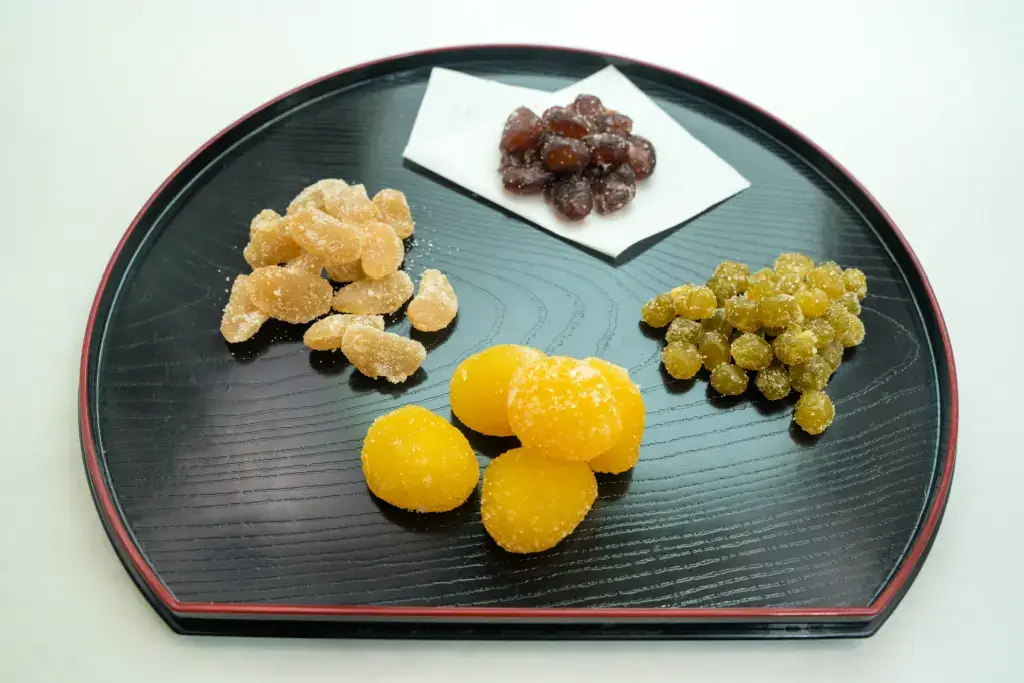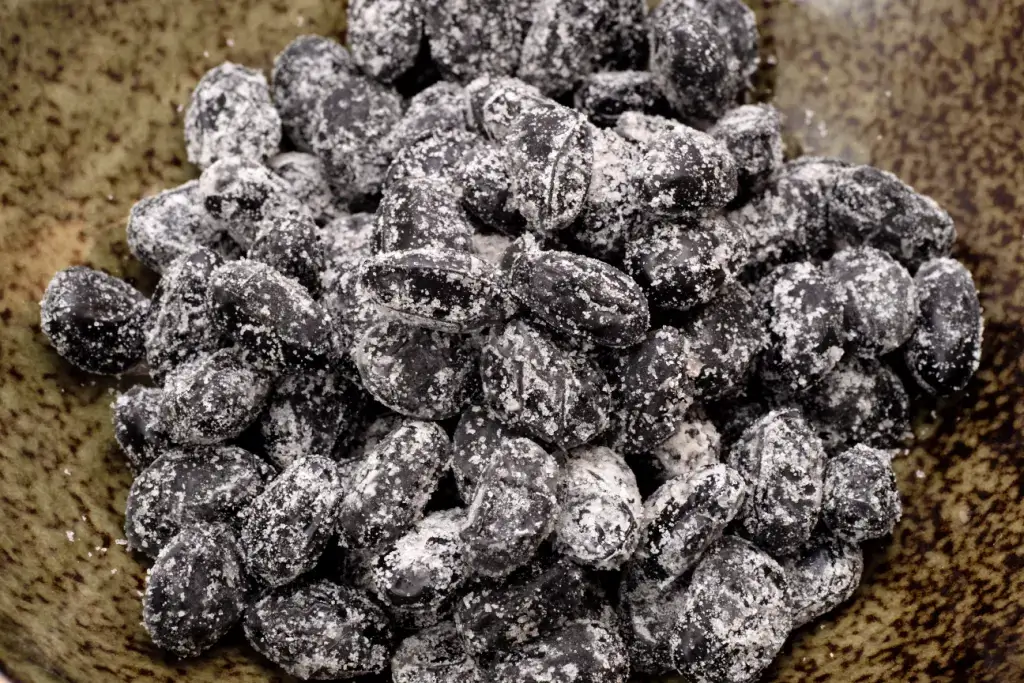Amanatto are a snack made of sweet beans; more specifically, they coat Japanese beans and other ingredients with sugar. With its pretty jewel colors and glittering sugar frosting, this amanatto will surely set your sweet-tooth tingling. Typically, it is served with green tea that balances well with the sweetness, but it is perfectly fine. Read more about this simple yet satisfying Japanese snack that will fix your sugar cravings!
Table of Contents
ToggleWhat is amanatto?
Amanattō is a traditional Japanese candy made from azuki (red beans) or other grains. To create this confectionery, the beans are simmered in sugar syrup, dried, and then covered with another layer of sugar. The result is a candy-like appearance, which gives it a pleasant, snow-glazed appearance. The sugar coating creates a thin, crunchy shell around the bean with a firm and fudgy texture. Amanatto can be found in bags in grocery stores or as boxed omiyage (souvenirs) in train stations in Japan.

What kind of beans does it use?
Azuki is the most popular bean since it has strong skin and a sweeter taste when cooked. Confectioners can use azuki, soybeans, and other beans to make amanatto, creating unique flavors for each variety. Kidney beans, hanamame (flower beans), peas, and black beans are some of the most common in this sweet treat.
Kidney beans and hanamame are slightly denser than ordinary boiled beans since the sugar draws out some moisture. Once you bite into a piece, you will find a light, savory scent like a butter bean. The refined sweetness of the sugar dominates, but the bean flavor comes through gradually, although it is only subtle.

Peas have much more moisture, and there is a high ratio of sugar to legumes. Yet the distinctive pea flavor is still detectable, which makes it a tremendous Japanese snack. As peas are naturally sweet, the vegetable taste is not unpleasant or strange.
The large black beans have the most interesting texture. The degree of moistness varies with each piece, but the least dry resembles dates. With thicker and tougher skins than the other beans, they have chewy, moist, almost fruity flesh inside. True to their dark color, they have a hint of bitterness, so they are the least sweet of the selection.
Looking to experience some one-of-a-kind Japanese delights? Check out Sakuraco! Sakuraco delivers traditional Japanese snacks, teas, and sweets from local Japanese makers directly to your door so you can enjoy the latest treats directly from Japan!
Where did it come from?
Hosoda Yasubei reportedly developed this kind of Japanese snack during the Bunkyū years (1861–1863). He created the recipe shortly after sugar became widely available throughout Japan. Before sugar, Japanese confectioners used and still use beans to sweeten desserts. People originally called it amanatto, but abbreviated it to amanatto after WWII. The name’s similarity to the fermented soy dish natto is a coincidence.

Yasubei opened a wagashi (traditional Japanese sweets) store in Tokyo, which he named after his childhood name, Eitaro. This confectionery store still exists today, and several other shops exist in Tokyo. You can buy all sorts of Japanese snacks and marvel at a store that’s been there for roughly 200 years!
Do people use these sweet beans in other snacks?
As the name suggests, amanatto with sekihan (red rice with sweetened soybeans) is red rice cooked with amanatto. It tastes sweet and is popular among the locals for its delicious sweetness when sprinkled with sesame salt. Since it is made without azuki, the rice does not turn red; they use food coloring instead.

Amanatto is nearly the same size as raisins, so some people like to make bread or cake using wagashi instead of raisins. A popular combination is green tea, sweet milk, and yomogi (Japanese mugwort) bread with amanatto. Others add them to their plain cereals or yogurt to make them even healthier without adding much sugar.
Why should I try amanatto?
You should try amanatto for its unique taste and cultural significance. This traditional Japanese confection offers a delightful combination of sweetness and bean flavor, providing a satisfying, unique, and enjoyable texture. As a wagashi, amanatto represents a part of Japan’s rich culinary heritage, offering a glimpse into the country’s confectionery traditions.

Moreover, amanatto is a versatile and potentially healthful addition to your diet. Using beans as the main ingredient provides nutritional benefits, including protein, potassium, magnesium, folate, iron, and zinc. Often made without preservatives or additives, amanatto emphasizes the natural flavors of its ingredients, ensuring a high-quality product. By trying amanatto, you’ll experience a unique confection with sweet beans. Have you ever had it before? Let us know in the comments below!










